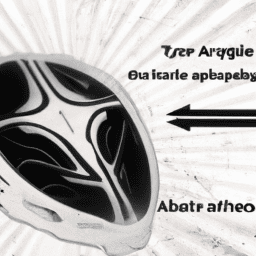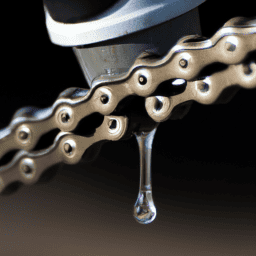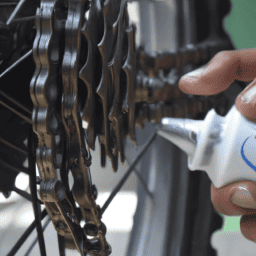Beginners Guides
Sustainable Transportation in Freiburg

As cities around the globe become more urbanized, they are confronted with the challenge of offering efficient and sustainable modes of transportation for their inhabitants.
Freiburg, Germany has become a leader in sustainable transport solutions, with a three-pronged approach that involves restricting car use, providing effective alternatives to cars, and regulating land use.
Sustainable Transportation in Freiburg
By restricting car use through measures such as banning traffic in the city center and eliminating on-street parking, Freiburg has encouraged public transport, cycling, and walking.
The city has also developed an extensive network of cycle paths and pedestrian walkways, making it easy and convenient to get around without a car. And by regulating land use to prevent sprawl, Freiburg has ensured that public transport and other sustainable transport options can flourish.
As a result of these efforts, Freiburg has become a model for sustainable urban transportation.
Climate Change Is One Aspect of Sustainability
As the world becomes increasingly industrialized, the need for sustainability becomes more pressing. Sustainability is the practice of meeting the needs of the present without compromising the ability of future generations to meet their own needs.
Climate change is just one aspect of sustainability; others include food security, energy conservation, and waste reduction. To be truly sustainable, we must find ways to address all of these issues simultaneously.
That will require a concerted effort from individuals, businesses, and governments around the globe. But if we are to leave a livable planet for our children and grandchildren, it is an effort that we must make.
Freiburg, Germany Forward-Thinking Transportation Planning and Design
Freiburg, Germany is a city that has been lauded for its forward-thinking transportation planning and design. The city was nearly destroyed during WWII by Allied bombing raids, but it has since been rebuilt and now serves as a model for other cities looking to improve their transportation infrastructure.

One of the key features of Freiburg’s transportation system is its focus on public transit. The city has an extensive network of buses and trams that are easily accessible and convenient for residents.
In addition, the city has invested in pedestrian- and bicycle-friendly infrastructure, including a system of interconnected greenways that crisscross the city.
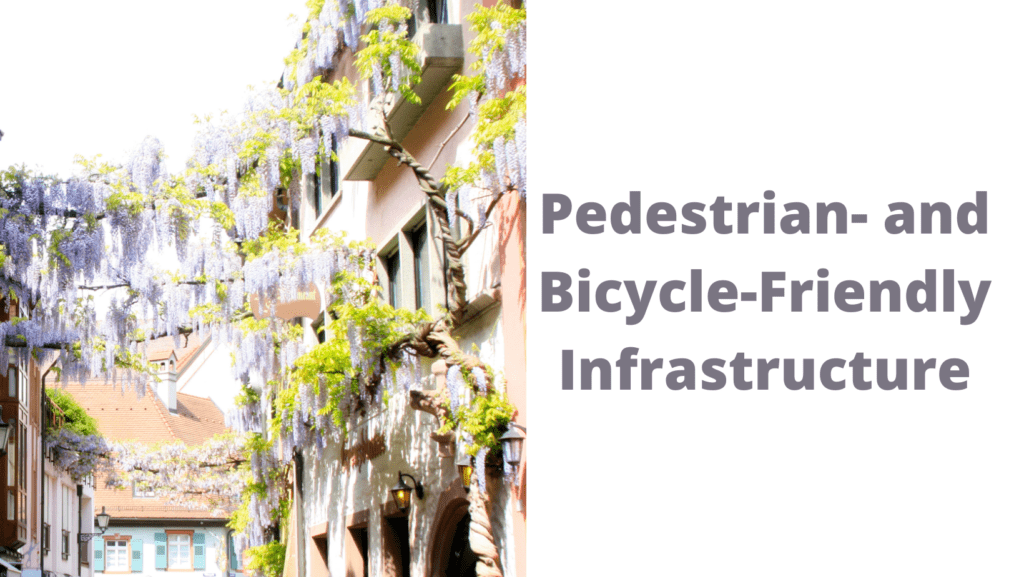
As a result of these efforts, Freiburg has one of the lowest rates of car ownership in Germany, and residents have easy access to alternative modes of transportation. The city’s success demonstrates that it is possible to create a thriving, livable city without relying on cars as the primary mode of transportation. For more details take a look at the Sustainable Transport in Freiburg: Lessons from Germany’s Environmental Capital by Ralph Buehler and John Pucher.
In many parts of the world, the dominance of the automobile is increasingly challenged by calls for more sustainable modes of transport.
In Germany, this shift began in the 1970s in response to the oil crisis, and it has gathered momentum in recent years as cities seek to reduce traffic congestion and air pollution. One city that has been at the forefront of this change is Freiburg, which has implemented a series of policies over the last three decades to encourage more walking, bicycling, and public transport use.
As a result, the number of bicycle trips in Freiburg has tripled, public transport ridership has doubled, and the share of automobile trips has declined from 38% to 32%. This shift away from car dependence has not only made Freiburg a more liveable city, but it has also helped to reduce its carbon footprint.
With climate change increasingly on the agenda, other cities are now looking to Freiburg for inspiration on how to create a more sustainable transportation system.
Since 1990, the world has seen a leveling-off of motorization rates and a corresponding fall in per-capita CO2 emissions from transport, despite strong economic growth.
This is according to a new study by the International Transport Forum (ITF) at the OECD. The analysis identifies policies that are transferable to car-oriented countries around the world, including measures to encourage the use of public transport, walking and cycling, as well as more fuel-efficient vehicles.
ITF Director General Young Tae Kim said: “This study provides hope that it is possible to decouple economic growth from transport emissions.” He added: “It also shows that policy choices matter. The right mix of policies can break the link between emissions and growth, giving us a better chance of meeting our climate goals.”
Among the findings of the study, which looked at data from 48 countries: – In 2015, 1.3 billion people lived in countries where transport emissions were lower than in 1990, despite strong economic growth.
This is equivalent to 17% of the world’s population. – The level of motorization has reached a plateau in many countries. Between 1990 and 2015, the number of motor vehicles per 1,000 inhabitants increased by just 3% on average across the OECD, down from annual average growth of 5% between 1960 and 1990.
The study shows that a number of countries have been able to reduce per-capita emissions from transport while also experiencing strong economic growth. These “decoupling” countries include Denmark, Estonia, Finland, the Netherlands, Norway, Switzerland and Sweden in Europe; as well as Japan and New Zealand.
The report highlights a range of policy measures that have contributed to this decoupling, including:
- Promoting the use of public transport, walking and cycling: In many European countries, government policies have encouraged the use of public transport, walking and cycling through a combination of infrastructure investment (e.g. building cycle lanes), pricing measures (e.g. congestion charges), and subsidies (e.g. free public transport for students).
What Has Freiburg Done to Reduce Traffic?
Freiburg, a small city in southwest Germany, has been very successful in reducing traffic congestion and pollution. This is due to the 400km of traffic-free cycle paths, 9000 bike parking spaces, and a bike and ride system linking to public transport.

In addition, the city has implemented a comprehensive system of traffic management, which includes regulating traffic flows, providing real-time information on traffic conditions, and enforcing environmental standards.
As a result of these measures, Freiburg has been able to vastly improve its air quality and reduce noise pollution. The city is now an attractive place to live and work, and its success in reducing traffic congestion and pollution is an example for other cities to follow.
What Makes Freiburg a Sustainable City?
Freiburg, Germany is known as Europe’s “solar city” for good reason – the city has set ambitious goals of achieving 100% renewable energy by 2035 and carbon neutrality for the entire city by 2050.
A large part of Freiburg’s success in meeting these goals is thanks to its use of solar energy. The city has installed over 10,000 photovoltaic panels on rooftops and in open spaces, generating enough electricity to power 1,500 households.
In addition to generating renewable energy, the panels also help to heat water for Freiburg’s swimming pools. The city has also invested in solar thermal systems, which are used to heat buildings.
Thanks to Germany’s Electricity Feed-in Law, Freiburg’s solar energy projects have guaranteed feed-in tariffs, making them financially viable. As a result of these efforts, Freiburg is well on its way to becoming a model for sustainable cities worldwide.
Beginners Guides
Unveiling the History of the Bicycle: A Comprehensive Guide
Intrigued by the secret stories woven into the fabric of bicycle history, discover the unexpected twists and turns that have shaped our world.
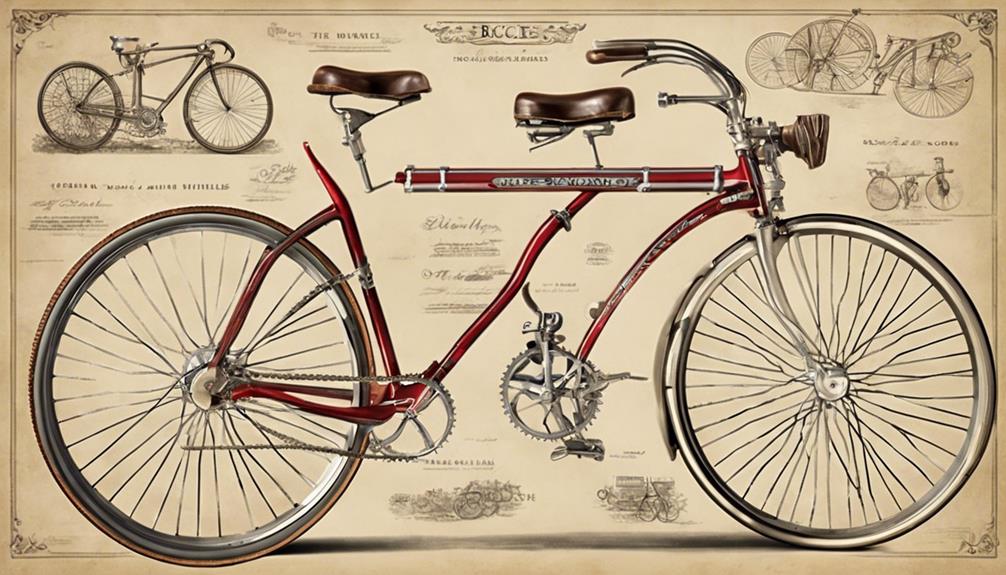
Embarking on this journey through the annals of bicycle history is akin to unlocking a treasure trove of untold tales and revolutionary advancements that have reshaped our world in unexpected ways.
As we navigate through the labyrinth of time, tracing the intricate paths that bicycles have traversed, we are met with a tapestry of narratives waiting to be unraveled.
Join us on this exploration as we uncover the hidden intricacies and remarkable stories that have propelled the humble bicycle into the realm of cultural icon and societal transformer, forever altering the landscapes they pedal through.
Key Takeaways
- Velocipede's evolution from Karl von Drais to modern mountain bikes showcases continuous innovation.
- Bicycles influenced women's liberation, urban planning, wartime efficiency, and sustainable living.
- Milestones like the safety bicycle and cycling infrastructure shaped bicycles' societal impact.
- Bicycle's journey from early designs to sleek modern forms reflects a rich history of progress.
Origins of the Bicycle
The invention of the first human-powered land vehicle, the velocipede, in 1817 by Karl von Drais revolutionized personal transportation with its innovative design and functionality. This precursor to the modern bicycle featured a simple yet effective design, comprising two miniature carriage wheels and a frame that allowed riders to propel themselves forward by pushing off the ground. The velocipede's front wheel served as the steering mechanism, providing riders with control over their direction of travel.
As the velocipede evolved over time, incorporating advancements such as the addition of pedals and chain mechanisms, it eventually paved the way for the development of various bicycle models, including the mountain bike. The mountain bike, characterized by its sturdy frame and knobby tires, was specifically designed for off-road cycling adventures, catering to individuals seeking freedom and exploration in rugged terrains.
Despite these advancements, the fundamental concept of utilizing the front wheel for steering remained consistent throughout the evolution of bicycle designs, highlighting the enduring impact of Karl von Drais's original invention.
Evolution of Bicycle Designs

With a focus on the evolution of bicycle designs, significant innovations have continually shaped the landscape of cycling technology and functionality. From the rudimentary running machine in 1817 to the modern bicycle designs we see today, the progression of two-wheeled transportation has been remarkable.
- Wooden Frame and Two Wheels (1817): The running machine set the foundation for future bicycle designs with its simplistic yet groundbreaking concept.
- Pedal-Powered Bicycles (1861): Pierre Michaux's addition of pedals to the front wheel marked the transition to modern pedal-powered bicycles, revolutionizing the way we ride.
- Penny Farthing (Mid-1800s): The iconic penny farthing, with its large front wheel and small rear wheel, showcased early innovations in bicycle design and captured the imagination of riders.
- Safety Bicycle (1880s): The introduction of the safety bicycle with its chain drive and equal-sized wheels brought about improved stability and safety, shaping the future of cycling comfort and accessibility.
Throughout history, these innovations have paved the way for the sleek, efficient, and versatile modern bicycles we enjoy today.
Impact of Bicycles on Society
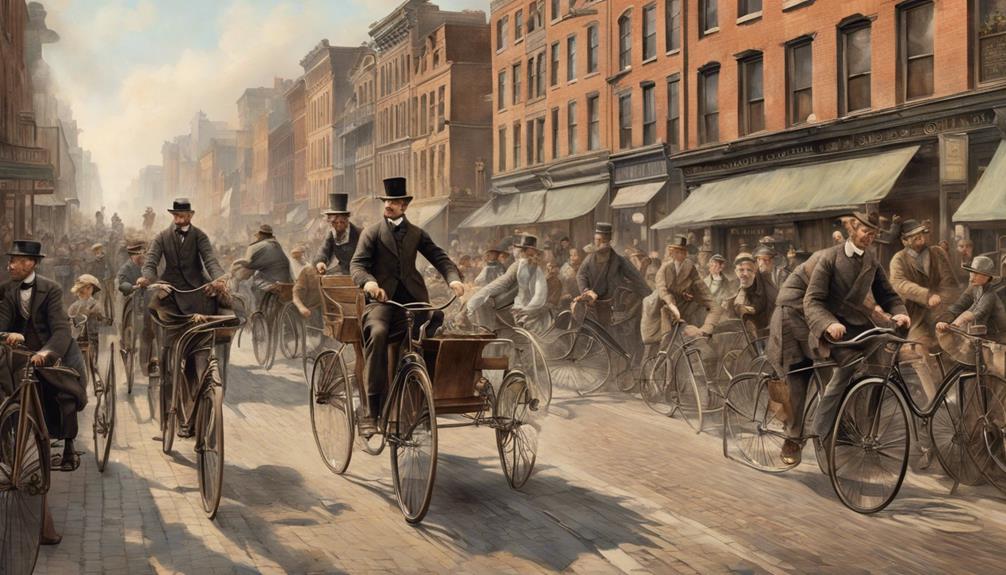
Pivoting from the evolution of bicycle designs, the societal impact of bicycles has been multifaceted and profound throughout history. Bicycles played a pivotal role in women's emancipation, symbolizing newfound independence and mobility in the late 19th century. They reshaped urban landscapes, prompting cities to develop cycling infrastructure to accommodate the growing popularity of cycling. During World War I, bicycles demonstrated their efficiency in navigating trenches, highlighting their practicality in wartime scenarios.
However, the post-World War II era witnessed a shift in transportation preferences towards automobiles, posing challenges to the bicycle industry. Despite this, bicycles have persisted as a symbol of sustainable transportation and healthy living. They continue to promote environmental benefits by reducing carbon emissions and fostering physical activity. As a mode of transportation, bicycles offer individuals the freedom to move efficiently while contributing to a greener and healthier society.
Notable Milestones in Bicycle History

In the annals of bicycle history, significant milestones have marked pivotal advancements in the evolution of this beloved mode of transportation.
- The first human-powered land vehicle, the velocipede, was invented in 1817 by the German baron Karl von Drais, featuring two miniature carriage wheels.
- Frenchman Pierre Michaux revolutionized bicycles in 1861 by adding pedals to the front wheel, giving birth to the modern pedal-powered bicycle.
- The mid-1800s saw the emergence of the iconic penny farthing, with a large front wheel, showcasing early variations of bicycle designs.
- Safety concerns in the 1880s led to the development of the safety bicycle, with a chain drive and equal-sized wheels for improved stability.
These milestones, driven by innovative bicycle mechanics and the passion for enhancing transportation, have shaped the bicycles we know today.
From the humble beginnings of the velocipede to the safety innovations of the late 19th century, each development has played a crucial role in the rich tapestry of bicycle history, fueling its growth as a popular recreational activity and mode of transportation.
Cultural Significance of Bicycles

Bicycles have long served as more than just a mode of transportation, embodying deep cultural significance through their historical impact and societal symbolism. In the late 19th century, bicycles symbolized women's emancipation and newfound mobility, breaking traditional norms and empowering women to explore the world independently.
As cities adapted to accommodate the growing popularity of bicycles, urban landscapes transformed, emphasizing the importance of sustainable and efficient transportation methods. During World War I, bicycles played a crucial role in enhancing efficiency during trench maneuvers, showcasing their utility beyond civilian life.
Cycling not only became a popular recreational activity but also a symbol of societal transformation, representing freedom, progress, and individualism. However, the rise of automobiles post-World War II posed challenges for the bicycle industry, leading to shifts in transportation preferences and urban planning.
Despite these challenges, bicycles remain ingrained in our cultural fabric, symbolizing a sustainable and healthy lifestyle choice while continuing to inspire societal change and progress.
Frequently Asked Questions
What Is the Origin of the Bicycle History?
The origin of bicycle history traces back to 1817 with Karl von Drais' invention of the Velocipede, the first human-powered land vehicle. Riders propelled it by foot, reaching speeds of 5-6 mph, revolutionizing mobility in the 19th century.
What Is the History of the Old Bicycle?
We unveil the fascinating history of the old bicycle, tracing back to 1817 with Karl von Drais' invention of the Velocipede. This human-powered vehicle revolutionized transportation, offering riders speeds of up to six miles per hour.
Why Did Karl Von Drais Invent the Bicycle?
We invented the bicycle to revolutionize transportation. Karl von Drais created it in 1817 for efficient, less labor-intensive travel. His design, with two miniature wheels and foot propulsion, enabled faster speeds and covered more ground with less effort than walking.
How Did the Bicycle Affect American History?
Bicycles revolutionized American history, empowering individuals with newfound freedom and shaping social movements. They provided mobility for all, challenged norms, and fueled economic growth. Weaving through the fabric of society, bicycles paved the way for progress.
Conclusion
In conclusion, the history of the bicycle is a winding road filled with innovation, resilience, and societal impact.
As we pedal through the past, we uncover the spokes of progress, the chains of change, and the wheels of revolution that have shaped our world.
Like a well-oiled machine, the bicycle continues to roll forward, carrying with it the stories of generations past and the promise of a brighter future.
Olivia’s writing is not only informative but also inspiring. She has a knack for telling stories that capture the essence of cycling and the joy it brings to people’s lives. Her writing has been praised by readers and industry experts alike for its clarity, depth, and authenticity.
In addition to her writing, Olivia is also an avid cyclist. She enjoys exploring new trails and routes and has participated in several cycling events and races. Her first-hand experience with cycling gives her a unique perspective on the sport, reflected in her writing.
Overall, Olivia is a talented writer passionate about cycling and dedicated to producing high-quality content for FlatironBike. Her contributions to the magazine have helped make it a go-to source for cycling enthusiasts worldwide.
Beginners Guides
How to Properly Bicycle Top Tube Measurement
Discover the crucial steps and considerations for accurately measuring your bicycle's top tube length, enhancing your riding comfort and performance.

As cyclists, we often overlook the impact of top tube measurement on our riding experience. Did you know that a mere centimeter difference in top tube length can significantly affect your comfort and performance on a bike?
Understanding how to properly measure the top tube is crucial for achieving the ideal fit, but where do you start? Let's explore the key steps and considerations involved in obtaining an accurate top tube measurement to enhance your biking experience.
Key Takeaways
- Top tube length influences rider position and weight distribution.
- Use calipers or wrenches for accurate measurements.
- Effective top tube length crucial for comfort and efficiency.
- Adjust bike fit based on top tube measurement results.
Importance of Top Tube Measurement
Understanding the significance of top tube measurement is paramount in ensuring optimal rider comfort and performance on a bicycle. The top tube, which runs horizontally between the seat tube and the head tube of the bike frame, plays a crucial role in determining the rider's riding position. It directly affects the reach to the handlebars and influences how the rider's weight is distributed on the bike. The top tube measurement, along with the seat tube angle, impacts how the rider's body fits properly on the bike.
For mountain biking, a shorter top tube may provide more control and maneuverability, while a longer top tube may be preferred for road biking to enhance aerodynamics. Choosing the right top tube length for your bike ensures that you can ride comfortably for extended periods without straining your back, shoulders, or arms. Proper top tube measurement also prevents any discomfort or injuries that may arise from an ill-fitting bike frame. By understanding the importance of top tube measurement, riders can select a bike size that suits their body proportions and riding style, ultimately enhancing their overall biking experience.
Tools Needed for Measurement
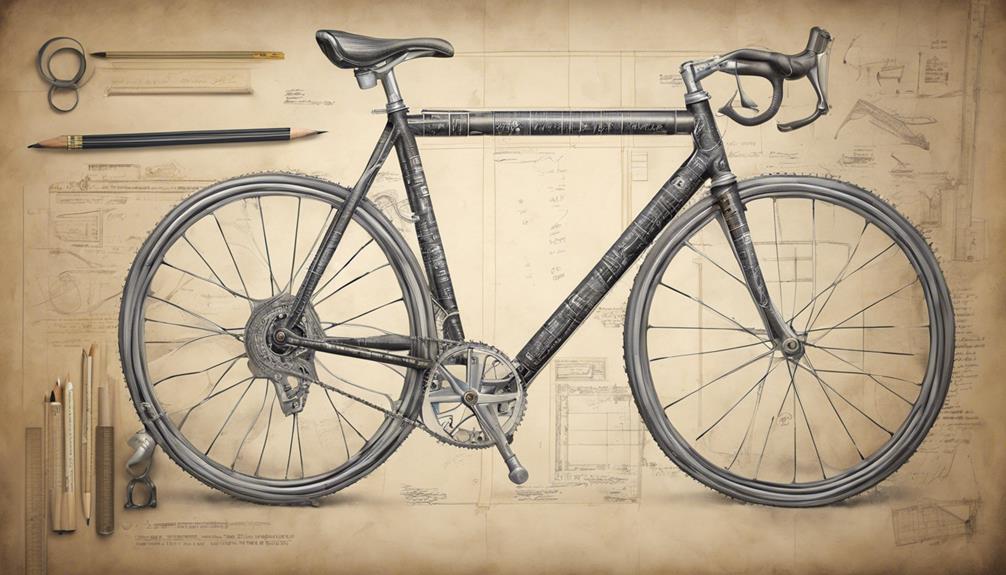
To accurately measure the top tube diameter of a bicycle, it's recommended to utilize calipers as they provide precise readings for this crucial aspect of bike frame assessment. Standard top tube diameters commonly found include 1-1/8 inch (28.6 mm), 1-1/4 inch (31.8 mm), and 1-3/8 inch (34.9 mm).
When selecting measurement tools, digital calipers are ideal for their accuracy in obtaining these measurements. Alternatives to calipers include using a Crescent wrench or spanner wrenches, which can also yield reliable results if used correctly. Challenges may arise when dealing with imperial measurements, as interpretation errors can occur. It's crucial to ensure the tools used are suitable for the task to guarantee precise readings.
Plastic calipers, while less common, can also be used for measuring the top tube diameter. By selecting the appropriate tools, like calipers or digital calipers, riders can accurately determine critical measurements such as top tube diameter for a proper fit and bike assessment.
Step-by-Step Measurement Process

For accurate measurement of the top tube length on a bicycle frame, follow these step-by-step instructions. Begin by locating the center of the seat tube, typically where the seat post enters the frame. From this point, extend a vertical line up to the top of the head tube. This distance represents the effective top tube length, crucial for assessing reach and comfort on modern bikes with compact frame geometry.
Understanding the measurement method used by the manufacturer is key to interpreting the top tube length correctly. Various types of measurements exist, such as Effective (Unknown) or Effective (TT Center), each impacting the fit and riding experience differently. Ensuring the proper top tube length is essential for maintaining a comfortable and efficient riding position, thereby avoiding discomfort and fit issues that can arise from an incorrect fit.
Interpreting Measurement Results

Interpreting the results of top tube measurements requires a keen eye for detail and a thorough understanding of the various measurement methods used in bike geometry analysis.
When assessing the top tube length, it's crucial to consider the effective top tube length, which is the horizontal distance from the center of the head tube to the center of the seat tube junction.
This measurement plays a significant role in determining the appropriate frame size for road bikes, ensuring optimal comfort and performance.
Adjusting Bike Fit Based on Measurement
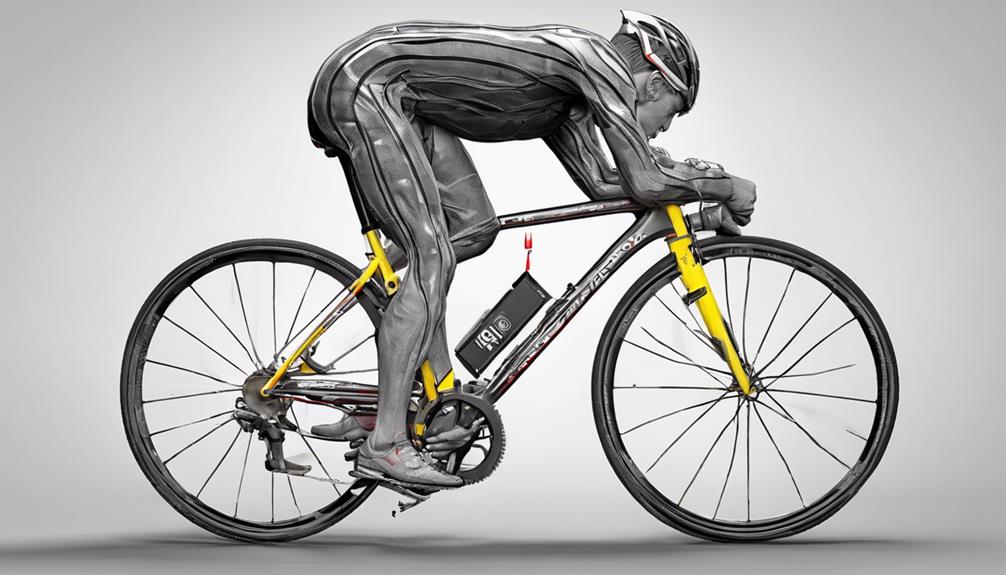
When adjusting bike fit based on proper top tube measurement, it's crucial to focus on optimizing the rider's position in relation to the bike's geometry for improved comfort and performance. To achieve this, consider the following:
- Bracket and Bottom Bracket: Adjusting these components can impact pedaling efficiency and power transfer.
- Effective Top Tube Length: Ensuring the right length enhances handling and comfort during rides.
- Tube Angles: Understanding these angles helps in fine-tuning the bike fit for better performance.
- Stack and Reach: These measurements affect the overall riding position and comfort on the bike.
- Saddle Height: Proper adjustment prevents discomfort and potential injuries, allowing for a more enjoyable ride.
Frequently Asked Questions
How Do You Measure a Top Tube on a Bike?
We measure a top tube on a bike by finding the distance between the seat tube and head tube centers. This helps determine reach and comfort. Accurate measurement is crucial for a proper fit and comfortable ride.
What Is the Effective Top Tube Length Height?
Effective top tube length height impacts bike handling and comfort. It's crucial for a proper riding position. Varying lengths affect how bikes feel. Understanding this measurement ensures a personalized fit, enhancing our cycling experience.
How Do You Measure Head Tube Length?
We measure head tube length from top to bottom where it meets the fork steerer tube. It's crucial for stack height and bike stiffness. Longer tubes offer an upright ride, shorter ones aero positions. It influences handling, comfort, and performance.
Is Reach or Top Tube Length More Important?
Reach is more crucial than top tube length. It determines our position on the bike, influencing comfort and efficiency. Optimal reach ensures control and handling. Top tube length may differ, but reach is consistent for rider fit, aiding bike selection.
Conclusion
In conclusion, proper top tube measurement is essential for achieving optimal comfort and performance on your bike.
Remember, 'measure twice, cut once' applies here – take the time to measure accurately to ensure a perfect fit.
With the right top tube length, you can ride with confidence and efficiency, knowing that your bike is tailored to your body for the best riding experience possible.
Olivia’s writing is not only informative but also inspiring. She has a knack for telling stories that capture the essence of cycling and the joy it brings to people’s lives. Her writing has been praised by readers and industry experts alike for its clarity, depth, and authenticity.
In addition to her writing, Olivia is also an avid cyclist. She enjoys exploring new trails and routes and has participated in several cycling events and races. Her first-hand experience with cycling gives her a unique perspective on the sport, reflected in her writing.
Overall, Olivia is a talented writer passionate about cycling and dedicated to producing high-quality content for FlatironBike. Her contributions to the magazine have helped make it a go-to source for cycling enthusiasts worldwide.
Beginners Guides
Top 10 Must-Have Items in Your Bicycle First Aid Bag
Uncover the essential items for your bicycle first aid bag and be prepared for any trailside emergency – your safety depends on it!
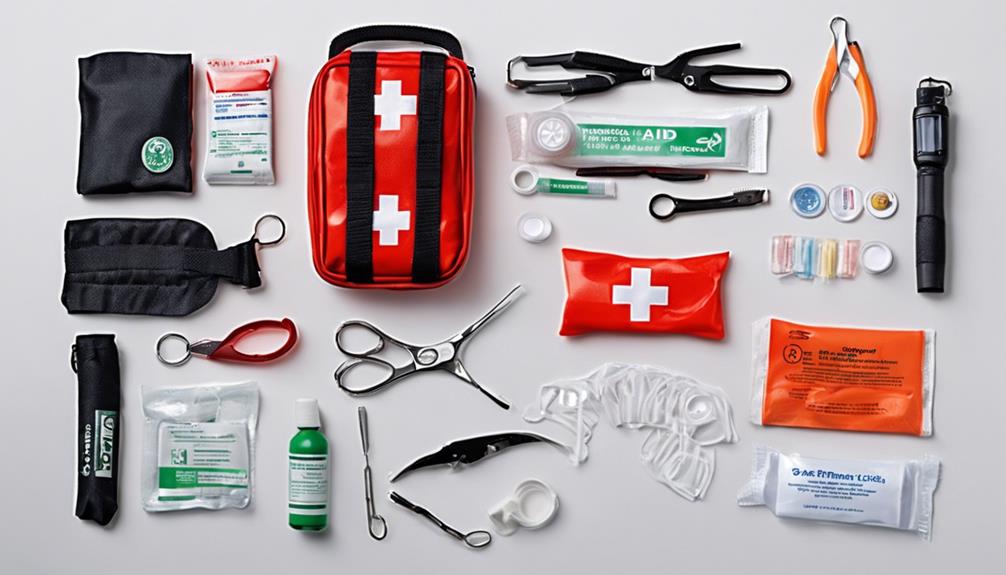
When hitting the trails on our bikes, having a well-equipped first aid bag is crucial for handling any unforeseen situations. Ensuring that we have the right items readily available can be a game-changer in dealing with emergencies during our rides.
From simple cuts and scrapes to more serious injuries, being prepared with the top 10 must-have items in our bicycle first aid bag can make all the difference in ensuring a safe and enjoyable cycling experience.
Key Takeaways
- Include adhesive bandages for covering cuts and scrapes, promoting quick healing.
- Antiseptic wipes are essential for cleaning wounds and preventing infections on the go.
- Carry gauze pads to absorb blood, prevent infections, and aid in wound care.
- Ensure pain management with pain relievers like ibuprofen, antihistamines for allergies in your first aid kit.
Adhesive Bandages
We always ensure our bicycle first aid bag includes a variety of adhesive bandages to cover small cuts and scrapes encountered during cycling. Adhesive bandages are essential for addressing minor wounds while on the go.
They play a crucial role in protecting small cuts from dirt and bacteria, promoting quicker healing, and preventing further injury. These bandages come in different sizes, shapes, and materials to cater to various types of wounds cyclists may experience.
Their convenience and ease of application make them a must-have item in any cyclist's first aid kit. By having a selection of adhesive bandages on hand, we can promptly address any small cuts or scrapes that may occur during our rides, allowing us to continue cycling with peace of mind.
Antiseptic Wipes

Antiseptic wipes are crucial for effectively cleaning and preventing infections in minor wounds. Their convenient individually wrapped packaging makes them easy to carry in a bicycle first aid bag.
Including antiseptic wipes ensures proper wound care and reduces the risk of complications while cycling.
Wound Cleaning Essentials
When cycling, it's crucial to have wound cleaning essentials like antiseptic wipes in your first aid bag to prevent infections and promote proper wound care. Antiseptic wipes are convenient, portable, and effective for on-the-go wound cleaning. These wipes contain antiseptic agents like alcohol or benzalkonium chloride, which help kill bacteria and reduce the risk of complications from minor injuries.
Including antiseptic wipes in your bicycle first aid kit is a proactive step to ensure you can address any wounds promptly. Remember, proper wound care with antiseptic wipes can make a significant difference in how quickly and effectively your injuries heal during cycling emergencies.
- Convenient and portable
- Contains antiseptic agents like alcohol or benzalkonium chloride
- Helps kill bacteria and prevent infections
- Promotes quick and effective wound care
Prevent Infection Effectively
After addressing wound cleaning essentials, the next critical step is to focus on effectively preventing infections using antiseptic wipes in your bicycle first aid bag. Antiseptic wipes are crucial for infection prevention in minor wounds as they contain antibacterial agents that help clean the affected area and reduce the risk of bacterial contamination. They are convenient, portable, and easy to use, making them ideal for on-the-go first aid care during cycling. Using antiseptic wipes promptly after an injury can help minimize the chances of developing an infection, promoting faster healing. Including antiseptic wipes in your bicycle first aid kit ensures you have a reliable way to disinfect minor wounds and maintain proper hygiene while cycling.
| Antiseptic Wipes | Infection Prevention | Minor Wounds |
|---|---|---|
| Antibacterial | Reduces contamination | Promotes healing |
Gauze Pads
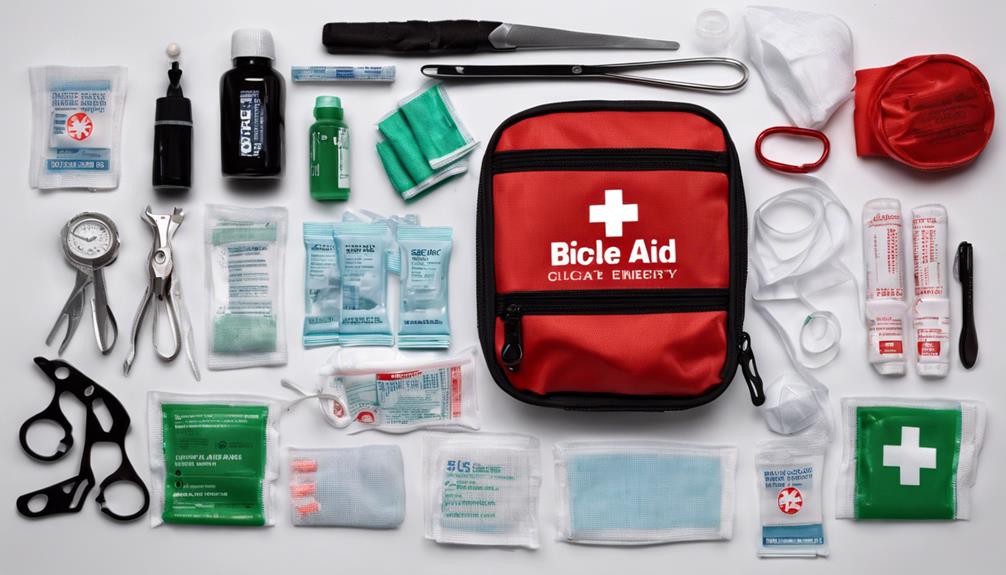
Gauze pads play a crucial role in proper wound care by absorbing blood and preventing infections. They're versatile, coming in various sizes to address different types of injuries effectively.
Including a range of gauze pad sizes in our bicycle first aid kit ensures we can handle various wounds and minimize infection risks.
Proper Wound Cleaning
In our bicycle first aid bag, we always include gauze pads for effective wound cleaning and protection. Gauze pads play a crucial role in proper wound care by absorbing blood and fluids while preventing infections.
Here are some key points to remember about gauze pads:
- Essential for preventing infection and promoting healing.
- Come in various sizes, such as 2×2 inches, suitable for different wounds.
- Non-adherent to wounds, reducing pain during dressing changes.
- Can be secured with adhesive tape or bandages for added protection.
Having gauze pads in your first aid kit ensures you're prepared to handle a variety of injuries effectively.
Dressing Wounds Effectively
When dressing wounds effectively, it is crucial to properly select and apply gauze pads to promote healing and prevent infections. Gauze pads are essential for absorbing blood and other fluids, aiding in the healing process. These pads come in various sizes, such as 2×2 inches, to cover wounds adequately. They are non-adherent, ensuring they do not stick to the wound and cause additional discomfort. Individually packaged gauze pads maintain sterility, reducing the risk of infection during first aid use. Proper application of gauze pads can help control bleeding, shield the wound from contaminants, and facilitate healing for various cycling injuries.
| Key Point | Description | Benefits |
|---|---|---|
| Absorb Blood and Fluids | Gauze pads absorb blood and fluids to aid in the healing process. | Promotes healing |
| Various Sizes Available | Different sizes, like 2×2 inches, cater to covering wounds of varying sizes. | Fits different wound sizes |
| Non-Adherent | Non-adherent properties prevent sticking to the wound during dressing changes. | Reduces pain and damage |
| Individually Packaged | Individually packaged for maintaining sterility and reducing infection risks. | Ensures cleanliness |
| Facilitate Healing | Proper application helps control bleeding, protect the wound, and aid healing. | Supports the recovery process |
Preventing Infection Risks
To safeguard against potential infections, incorporating gauze pads in your bicycle first aid kit is crucial for promoting wound healing and maintaining cleanliness. Gauze pads act as a sterile barrier, protecting the wound from outside contaminants.
Here are some key points to consider about gauze pads:
- Gauze pads are available in various sizes, making them versatile for different wound sizes.
- They can absorb blood and other fluids from the wound to promote healing.
- Properly applying gauze pads helps create a clean environment for wound healing.
- Using gauze pads can reduce the risk of complications and aid in the overall healing process.
Adhesive Tape

Securing dressings and bandages during cycling accidents is made easier with the versatile and reliable hold provided by adhesive tape. This essential item ensures that bandages stay in place, preventing further injury or contamination. Adhesive tape is compact and lightweight, fitting perfectly into any bicycle first aid kit. Its strong hold is crucial for keeping wounds protected while you continue your ride. Here's a quick look at why adhesive tape is a must-have in your cycling first aid bag:
| Benefits of Adhesive Tape | Description |
|---|---|
| Versatile Hold | Keeps bandages secure during movement. |
| Easy to Cut | Can be tailored to different wound sizes. |
| Compact | Takes up minimal space in your kit. |
| Lightweight | Ideal for carrying on cycling trips. |
With adhesive tape on hand, you can swiftly address any cuts or injuries that may occur while enjoying the freedom of the open road.
Tweezers
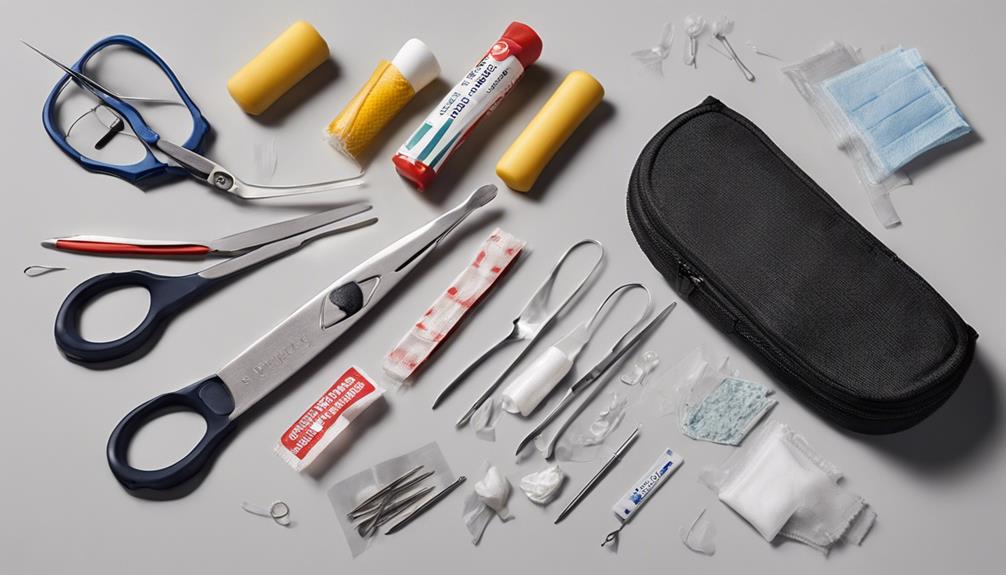
Having a reliable pair of tweezers in your bicycle first aid bag is essential for addressing minor injuries and removing foreign objects from the skin. Tweezers play a crucial role in managing skin injuries while biking, allowing for quick removal of splinters, thorns, or small debris that may cause discomfort or lead to infections.
Here are some key points about tweezers:
- Tweezers are versatile tools designed for precision in extracting foreign objects from the skin.
- They come in various sizes and shapes, with pointed or slanted tips to cater to different needs.
- Lightweight and compact, tweezers are easy to carry in a bicycle first aid bag or pocket.
- Quality tweezers with a good grip can make it easier to remove embedded objects from the skin during outdoor activities like biking.
Including tweezers in your first aid kit ensures that you can promptly address minor wounds or irritations, promoting a safer and more comfortable biking experience.
Scissors
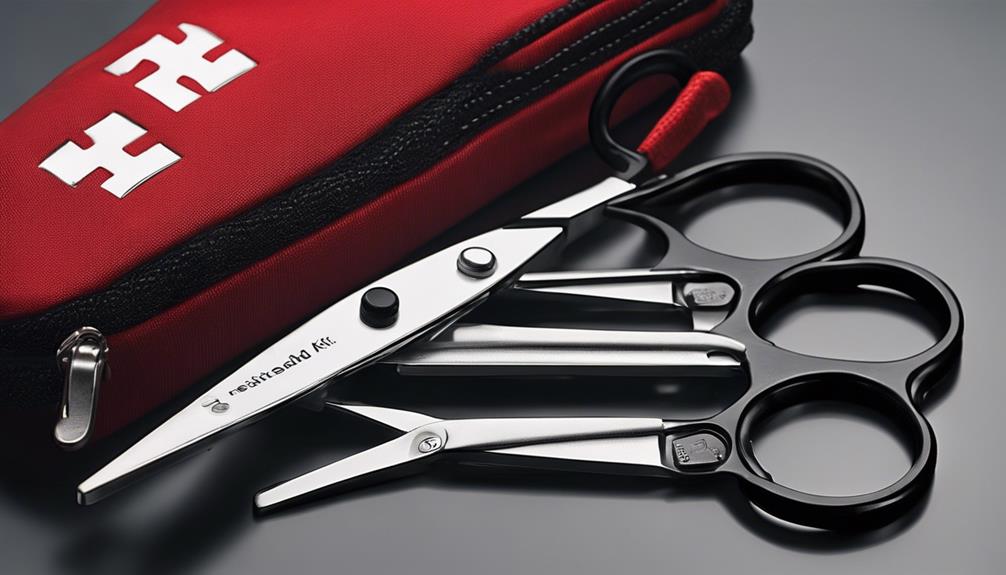
When it comes to our bicycle first aid bag, scissors play a crucial role in our emergency preparedness. These versatile tools are essential for cutting bandages, clothing, or other materials when needed.
It's important to choose scissors with blunt tips for safety and consider features like serrated edges for better grip and precision.
Essential Cutting Tool
We recommend including a pair of sharp and compact scissors in your bicycle first aid bag for efficient cutting during emergency situations. When choosing scissors for your kit, opt for ones with rounded tips to avoid accidental injuries. Ensure they're sharp and durable to cut through various materials easily. Compact and lightweight scissors are ideal for a bicycle first aid bag, as they won't add bulk. For more heavy-duty cutting tasks in emergencies, consider adding a pair of trauma shears to your kit.
- Choose scissors with rounded tips to prevent accidental injuries.
- Ensure scissors are sharp and durable for cutting through various materials.
- Opt for compact and lightweight scissors to fit easily into your first aid bag.
- Consider adding trauma shears for more heavy-duty cutting tasks.
Safety in Emergencies
Scissors are a crucial tool for ensuring safety in emergencies by enabling quick and precise cutting of materials in a bicycle first aid kit. They play a vital role in emergency situations, allowing for the efficient cutting of bandages or clothing to attend to injuries promptly. It is important to select scissors with rounded tips to prevent accidental skin punctures during use. By having scissors in your first aid bag, you can respond effectively to various medical situations while cycling. Compact and lightweight scissors are ideal for inclusion in a bicycle first aid kit, as they provide the necessary cutting capabilities without adding extra bulk or weight.
| Features | Description | Importance |
|---|---|---|
| Quick Cutting | Enables fast material cutting | Essential |
| Rounded Tips | Prevents skin punctures | Safety Measure |
| Lightweight | Easy to carry in first aid kit | Convenience |
Versatile Tool Usage
In emergencies, the versatile usage of scissors in a bicycle first aid bag extends to quickly and efficiently cutting materials like bandages and clothing for prompt injury care. Scissors are indispensable tools for accessing and treating wounds, as well as removing clothing to assess injuries during emergencies. Opting for scissors with rounded tips enhances safety in first aid situations, preventing accidental cuts or punctures on the patient's skin. Compact and durable scissors are ideal for fitting into a bike first aid kit without occupying excessive space. With scissors readily available in your first aid bag, you can respond effectively to various medical situations while cycling.
- Efficiently cut bandages and clothing
- Essential for treating wounds
- Opt for rounded tips for safety
- Compact and durable for bike first aid kits
Pain Relievers
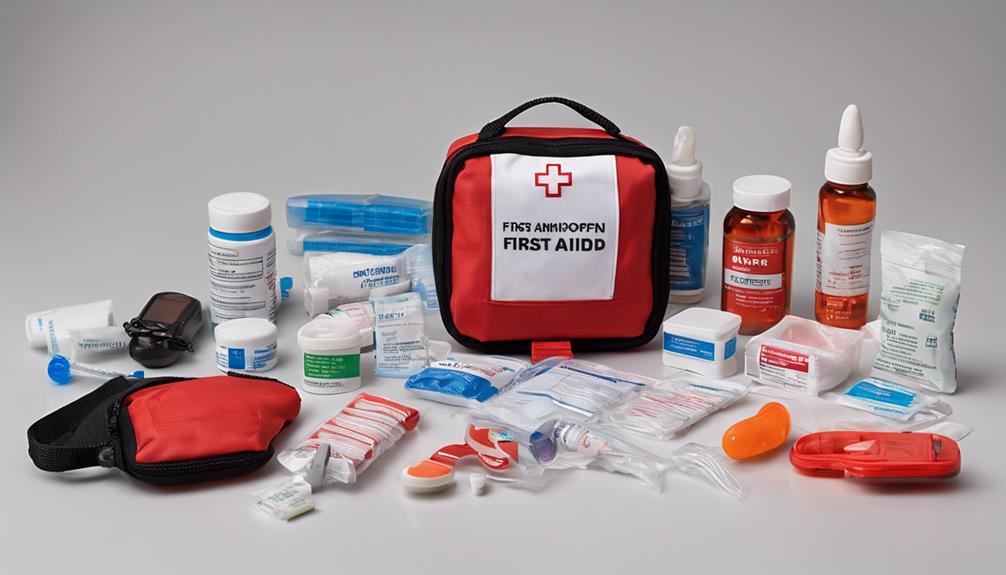
When cycling, it's crucial to have pain relievers like ibuprofen or acetaminophen readily available in your first aid bag to alleviate common discomforts such as muscle aches or joint pain. These medications can help reduce inflammation and manage minor injuries or muscle strains while on the road. It's advisable to carry pain relievers in individual packets or a small container for easy access during rides. Non-steroidal anti-inflammatory drugs (NSAIDs) are often recommended for pain relief in cycling first aid kits. Remember to check the expiration dates of pain relievers regularly to ensure their effectiveness.
| Pain Relievers | Description |
|---|---|
| Ibuprofen | Effective for reducing pain and inflammation. |
| Acetaminophen | Helps relieve mild to moderate pain, but does not reduce inflammation. |
Having these pain relievers handy can make a substantial difference in your cycling experience by providing quick relief when muscle aches or other pains arise.
Antihistamine
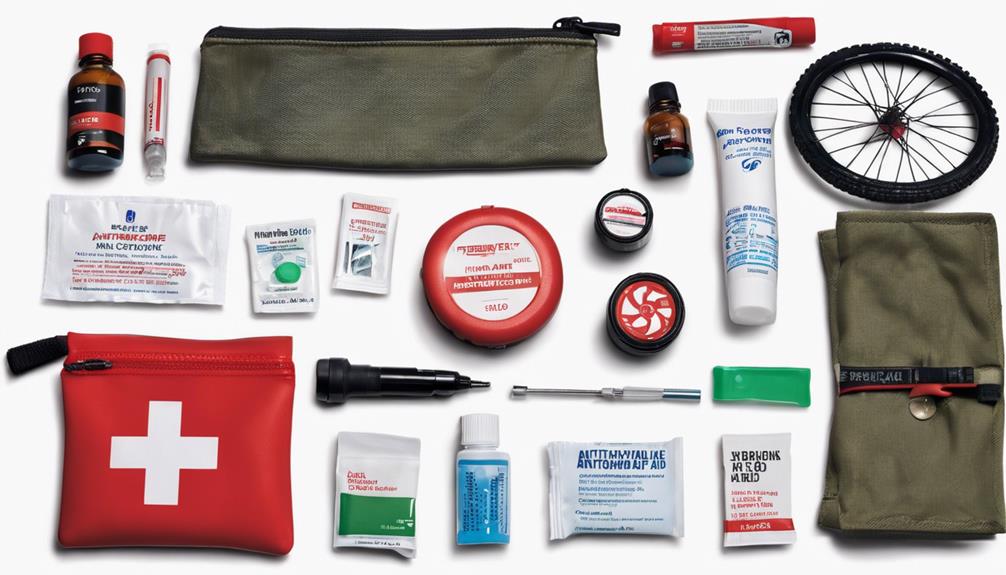
Including antihistamines in your bicycle first aid kit can be beneficial for addressing allergic reactions encountered during cycling trips, providing quick relief from itching, swelling, and other allergy symptoms. Antihistamines, such as Benadryl, are crucial in treating allergic reactions while out on a ride. These medications help reduce itching, swelling, and other symptoms caused by allergies or insect bites. They're available in various forms, including tablets, capsules, liquids, and creams. Remember to follow the recommended dosage instructions for antihistamines to ensure safe and effective use.
- Antihistamines, like Benadryl, are essential for treating allergic reactions.
- These medications help reduce itching, swelling, and other allergy symptoms.
- Antihistamines come in various forms such as tablets, capsules, liquids, and creams.
- Following recommended dosage instructions is crucial for safe and effective relief from allergic reactions.
Gloves
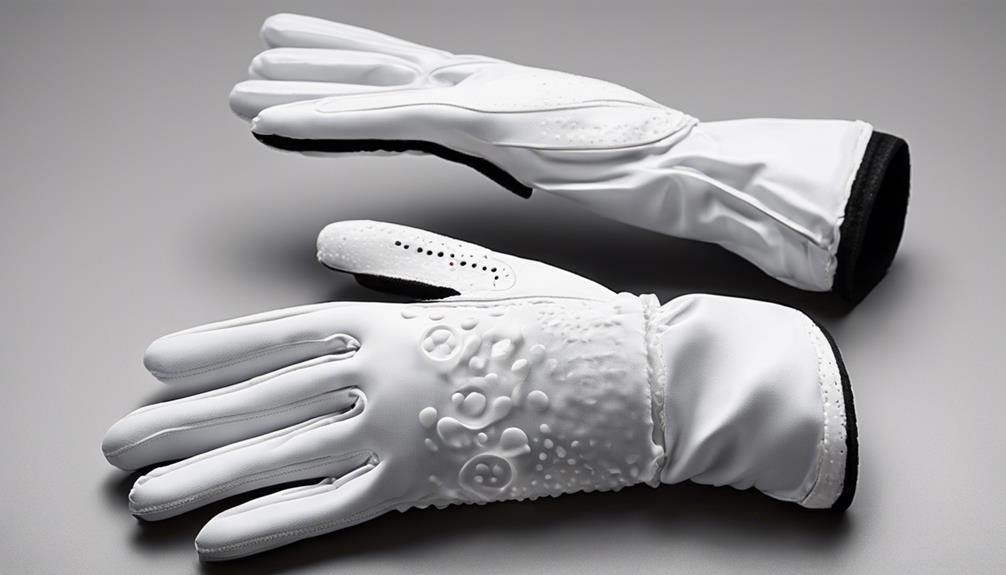
Equipping your bicycle first aid bag with gloves is essential for ensuring proper hygiene and preventing infections during medical emergencies. Gloves act as a protective barrier, reducing the risk of infection by preventing direct contact between the responder's hands and the wound. Maintaining hygiene is crucial in first aid procedures to prevent the transfer of bacteria or contaminants that could worsen the injury. Latex or nitrile gloves are commonly recommended for their durability and resistance to punctures or tears, ensuring reliable protection during emergencies.
When there's direct contact with blood, bodily fluids, or open wounds, wearing gloves is necessary to safeguard both the responder and the injured individual. After use, proper disposal of gloves is vital to prevent the spread of pathogens and maintain a clean environment. By including gloves in your bicycle first aid bag, you prioritize safety, hygiene, and infection prevention, essential components of effective emergency care.
Emergency Contact Information
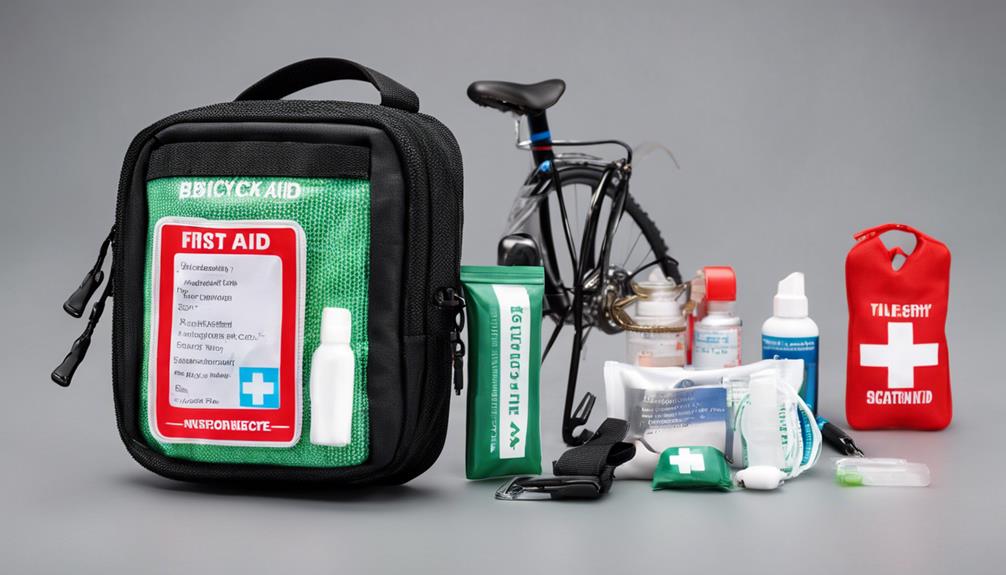
To ensure prompt assistance in case of an emergency while cycling, it's crucial to have readily accessible emergency contact information in your bicycle first aid bag. Including emergency contact information for yourself, family members, and relevant healthcare providers is essential. Consider adding ICE (In Case of Emergency) contacts to your bag to expedite the process. Providing detailed information such as names, phone numbers, and any important medical details can ensure proper care in case of an accident or injury.
- Include emergency contact information for yourself, family members, and any relevant healthcare providers.
- Ensure that the contact information is easily accessible in case of an emergency while cycling.
- Consider including ICE (In Case of Emergency) contacts in your bicycle first aid bag.
- Provide detailed information such as names, phone numbers, and any important medical details.
Frequently Asked Questions
What Should Be in a Biking First Aid Kit?
In a biking first aid kit, we typically include band-aids, gauze pads, tape, antibiotic ointment, and anti-itch cream. It's crucial to have essentials like Brave Soldier Crash Pack, SAM splints, Betadine, and Tegaderm for emergencies.
What Is 10 Item in a First Aid Kit?
We believe a first aid kit should include band-aids, gauze pads, waterproof tape, anti-biotic ointment, anti-itch cream, Brave Soldier Crash Pack, non-adhering wound dressings, butterfly closures, Betadine, Tegaderm, and SAM splints. Training in Wilderness First Aid and Basic First Aid/CPR is crucial.
What Must Be Inside the First Aid Bag Kit?
Inside our first aid bag kit, we pack essentials like band-aids, gauze pads, waterproof tape, antibiotic ointment, and anti-itch cream. These items help us handle cuts, scrapes, and insect bites while biking, ensuring we stay prepared for any minor emergencies.
What Are 5 Important Items in a First Aid Kit?
Here are five essential items for a first aid kit: band-aids for minor cuts, gauze pads for larger wounds, waterproof tape to secure dressings, antibiotic ointment to prevent infection, and anti-itch cream for bug bites.
Conclusion
In conclusion, having a well-equipped first aid bag is crucial for any cyclist hitting the trails. Being prepared with the top 10 must-have items can make all the difference in addressing injuries or emergencies.
Remember, it's better to have it and not need it, than to need it and not have it. Stay safe, stay prepared, and enjoy your ride knowing you're ready for whatever comes your way.
Olivia’s writing is not only informative but also inspiring. She has a knack for telling stories that capture the essence of cycling and the joy it brings to people’s lives. Her writing has been praised by readers and industry experts alike for its clarity, depth, and authenticity.
In addition to her writing, Olivia is also an avid cyclist. She enjoys exploring new trails and routes and has participated in several cycling events and races. Her first-hand experience with cycling gives her a unique perspective on the sport, reflected in her writing.
Overall, Olivia is a talented writer passionate about cycling and dedicated to producing high-quality content for FlatironBike. Her contributions to the magazine have helped make it a go-to source for cycling enthusiasts worldwide.
-

 Electric Bike2 months ago
Electric Bike2 months agoHow To Turn Your Bike Into An Electric Generator
-

 Bike4 weeks ago
Bike4 weeks agoAdvantages and Disadvantages of a Carbon Fiber Bike Frame
-

 Beginners Guides4 weeks ago
Beginners Guides4 weeks agoA Guide to Right Hybrid Bike Posture: How to Sit on the Bike for Optimal Performance
-
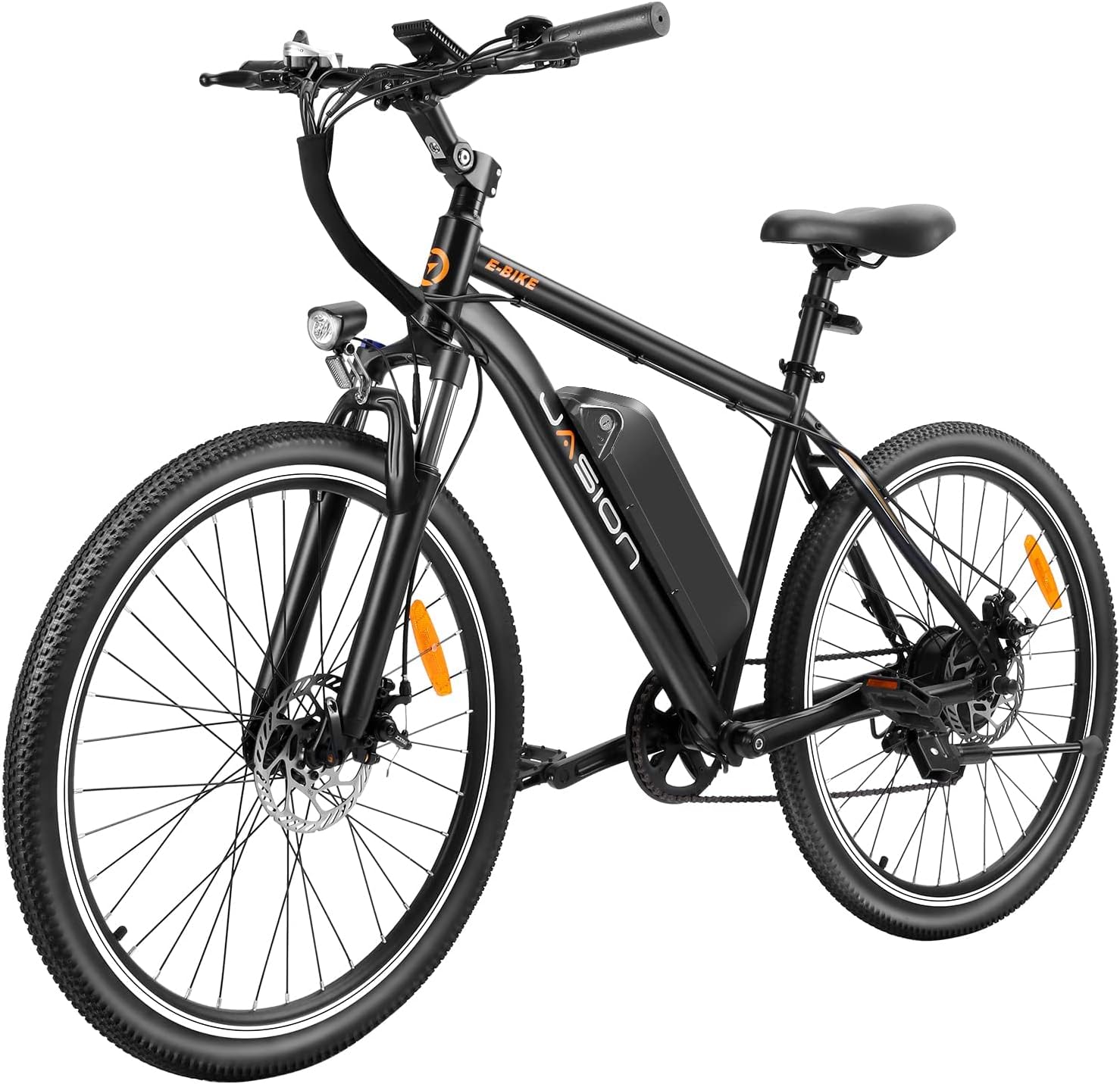
 Vetted2 months ago
Vetted2 months agoJasion EB5 Electric Bike Review: Commute Mountain Bike for Adults
-

 Beginners Guides4 weeks ago
Beginners Guides4 weeks agoWhere Are KTM Motorcycles Made?
-
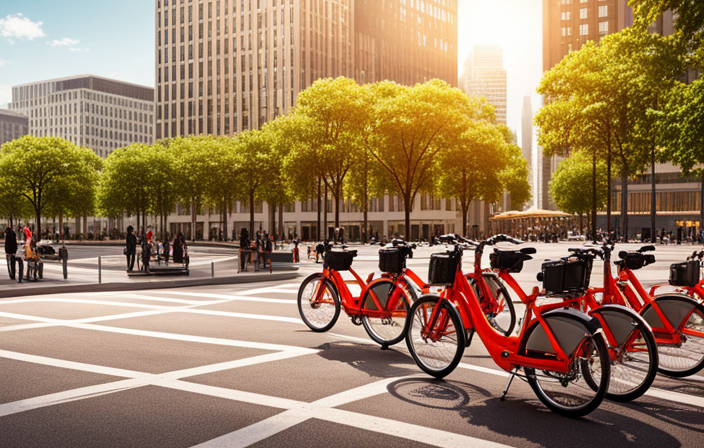
 Electric Bike2 months ago
Electric Bike2 months agoWhere To Get Free Electric Hybrid Bike
-

 Electric Bike2 months ago
Electric Bike2 months agoHow To Program Electric Bike Controller For More Speed
-

 Bike3 weeks ago
Bike3 weeks agoThe Science Behind Why a Bicycle Stays Upright: An Exploration of Balance and Stability










